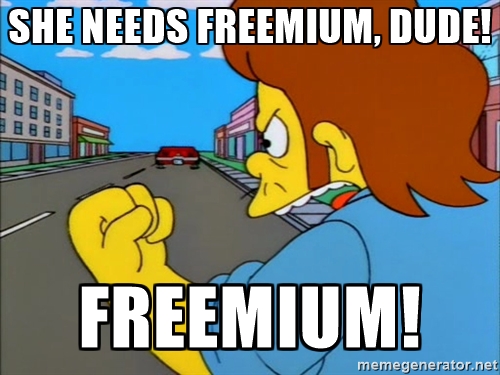Pokemon Go Ahead And Charge My Card
Amid all the talk of Pokemon Go lately, it seems obvious that I should find some sort of topic so I can latch onto the coattails of the phenomenon. While I already discussed the notion of teams and tribes last time (which definitely is in play here as people have developed almost completely irrational preferences for their stated “team”, despite there being no in-game community, no significant difference between player demographics and no actual difference between the team whatsoever), there’s more to this game than just “running around, catching pokemon”.
First off, let’s look at the fundamental components of the game: Your goal, as a pokemon trainer, is to “catch ‘em all”. Well, catch 150 of the 722 that exist (Well, catch whichever of the 150 of them that are in the game. Even from the beginning, you’re setting out on an impossible task). The method by which you achieve this goal is to wander around in the real world (using your GPS) and, upon achieving whatever undisclosed-yet-intensely-speculated coordinates, swipe your screen to throw a pokeball at the discovered pokemon and, if successful, capture it. As you develop an extensive collection, you can send extras back in exchange for “candy” that is used to evolve your pokemon into new, more powerful forms. Also, there are locations marked as PokeStops where one can replenish some of the supplies in the game (or get assaulted, depending on the relative safety of the actual geographic location of these stops). In addition to finding the pokemon themselves, you also find eggs which are hatched by walking so many kilometers. Lastly, there are gyms, which are similar to stops, but are the only actual multiplayer aspect of the game, as you can leave pokemon to guard them or fight the pokemon that are currently guarding it to claim it for your team. Alright, now that I’ve outlined the basic concept of the game, let’s look at some of the interesting psychological, ethical and economic implications of it.
The game rests upon extremely simple mechanics. The menu system is sparse, the help screens terse at best and even the catching/fighting systems are greatly simplified when compared to any other pokemon instance. This game is clearly not concerned with the deep strategy or story of those games, either. Once we start to scrape off the thin veneer of pokemon flavor over the top of the game, it’s true underlying “game” is revealed: The game exists as moving around the real world, performing simple screen-swipe based gestures that consume your in-game items. Those items are available in the world, but scarce. It’s extremely easy to replenish them, for real dollars, if you don’t want to walk a lot or wait for them to refill. This is the model of the “Freemium” game that has become so popular lately. Make a game free so that your player base is extensive. Make a method available to users that allows them to reduce the time it takes to reach milestones and goals by spending small amounts of money. Rake in crazy amounts of money from a “Free” game, while still not directly sticking it to free players. Pokemon Go seems to have achieved this, so far, without major strain (it helps that it’s basically the company’s previous successful GPS-based game with a layer of Pokemon over the top of it). They were not the first to invent it, or even perfect it, however. Early attempts at monetizing customization and creating a market for post-purchase income were panned by fans and I’m going to skip to when they started to find their balance point (this means I’ll be omitting all references to certain Microsoft game consoles named after certain Euclidian planar conventions). One of the best examples of a successful model is Team Fortress 2.
Originally part of a small collection of games called the Orange Box, TF2 grew to become something of a flagship for the fledgling Steam platform. As the game matured and was left behind in the changing world of FPSes, the developers sought out ways to ensure that their once mighty offering would remain profitable. They implemented a store that allowed purchasing of the various in-game weapons with real currency (instead of simply playing the game until you discovered them like everyone else). They also introduced customizations like hats, outfits, etc. that served no functional purpose, but were cosmetically striking. Once this was all in place, they made the game free to play. Upon doing so, they highlighted the effectiveness of “going free-to-play” for an existing game as they grossed more as a free game than as a paid one. This method has been attempted many times, before and since, to various levels of success. The worst offenders are shamed and often fail due to misreading these trends (See “Evolve”, a game that was widely considered to be tremendous fun, but even more widely despised for it’s ever-increasing DLC/Microtransactions to augment a game that was already above average in price.) Others can pull this trick off well (Many of the offerings of SuperCell are completely playable without spending any currency at all, yet top the highest-grossing lists every month).
As we see much angst and consternation about the “Freemium” model in today’s ever-widening gaming community, it might be good to stop and take a moment to look at the different players involved. With a free-to-play game containing microtransations (as long as the game is still playable without real currency purchases), we have several perspectives: The game creators, who can make substantial amounts of money, as seen by folks like SuperCell; The free players, who would or could not spend money on the game and are now empowered to experience the entire thing, free of charge; The casual players who may have spent a few dollars for a mobile game or a few tens of dollars for a console/PC game, who may still spend some money casually, but are largely unaffected by the transition; and the obsessive or moneyed individuals who will shell out ten or a hundred times the value of a “full cost” game otherwise, who are now empowered to empty their pockets for the sole purpose of being the very best that ever was. In a properly executed “Freemium” model, every one of these people’s experiences is either unaffected or improved.
-Kendric



